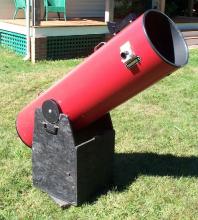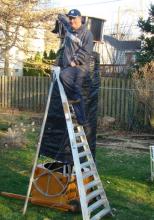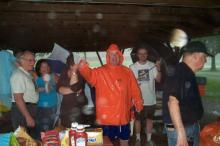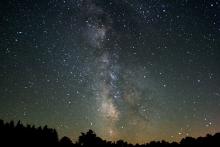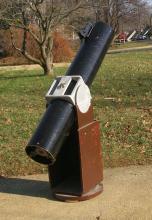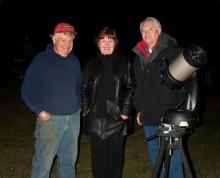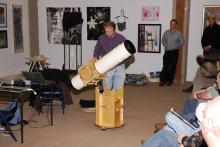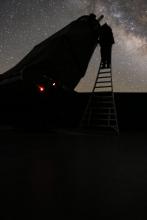Feed aggregator
Metal scar found on cannibal star
When a star like our Sun reaches the end of its life, it can ingest the surrounding planets and asteroids that were born with it. Now, researchers have found a unique signature of this process for the first time -- a scar imprinted on the surface of a white dwarf star.
Webb finds evidence for neutron star at heart of young supernova remnant
NASA's James Webb Space Telescope has found the best evidence yet for emission from a neutron star at the site of a recently observed supernova. The supernova, known as SN 1987A, was a core-collapse supernova, meaning the compacted remains at its core formed either a neutron star or a black hole. Evidence for such a compact object has long been sought, and while indirect evidence for the presence of a neutron star has previously been found, this is the first time that the effects of high-energy emission from the probable young neutron star have been detected.
A new beginning: The search for more temperate Tatooines
Luke Skywalker's childhood might have been slightly less harsh if he'd grown up on a more temperate Tatooine -- like the ones identified in a new study. According to the study's authors, there are more climate-friendly planets in binary star systems -- in other words, those with two suns -- than previously known. And, they say, it may be a sign that, at least in some ways, the universe leans in the direction of orderly alignment rather than chaotic misalignment.
Brightest and fastest-growing: Astronomers identify record-breaking quasar
Astronomers have characterized a bright quasar, finding it to be not only the brightest of its kind, but also the most luminous object ever observed. Quasars are the bright cores of distant galaxies and they are powered by supermassive black holes. The black hole in this record-breaking quasar is growing in mass by the equivalent of one Sun per day, making it the fastest-growing black hole to date.
New realistic computer model will help robots collect Moon dust
A new computer model mimics Moon dust so well that it could lead to smoother and safer Lunar robot teleoperations.
Black hole at center of the Milky Way resembles a football
The supermassive black hole in the center of the Milky Way is spinning so quickly it is warping the spacetime surrounding it into a shape that can look like a football, according to a new study. That football shape suggests the black hole is spinning at a substantial speed, which researchers estimated to be about 60% of its potential limit.
Astronomers report oscillation of our giant, gaseous neighbor
A few years ago, astronomers uncovered one of the Milky Way's greatest secrets: an enormous, wave-shaped chain of gaseous clouds in our sun's backyard, giving birth to clusters of stars along the spiral arm of the galaxy we call home. Naming this astonishing new structure the Radcliffe Wave, the team now reports that the Radcliffe Wave not only looks like a wave, but also moves like one -- oscillating through space-time much like 'the wave' moving through a stadium full of fans.
Under pressure -- space exploration in our time
A new paradigm is taking shape in the space industry as the countries and entities accessing space continue to grow and diversify. This dynamic landscape creates both competition and potential for scientific collaboration, as well as the challenges and opportunities of progress.
Evidence of geothermal activity within icy dwarf planets
A team found evidence for hydrothermal or metamorphic activity within the icy dwarf planets Eris and Makemake, located in the Kuiper Belt. Methane detected on their surfaces has the tell-tale signs of warm or even hot geochemistry in their rocky cores, which is markedly different than the signature of methane from a comet.












